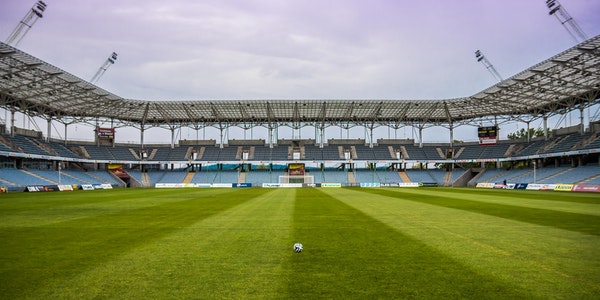- Direct Illumination
Focused Lighting: LEDs provide more directed and focused lighting, which minimizes light spill and ensures that the light is concentrated where it is needed. This precision reduces wasted energy that would otherwise be used to illuminate unintended areas.
Reflectors and Lenses: Advanced optics in LED fixtures, such as reflectors and lenses, help in directing the light precisely, enhancing efficiency and reducing the number of fixtures needed.
- Adaptive and Smart Lighting Systems
- Dynamic Control
Dimming Capabilities: LED systems can be easily dimmed without affecting their efficiency. This allows for the adjustment of light levels based on the specific requirements of different events, further conserving energy.
Real-Time Adjustments: Integration with smart control systems enables real-time adjustments to lighting based on occupancy, daylight availability, or specific event needs. For instance, during a concert, lights can be dimmed in less critical areas, saving energy.
- Scheduling and Automation
Automated Schedules: LED systems can be programmed to operate according to schedules, ensuring that lights are only on when needed. This automation prevents unnecessary energy usage when the stadium is not in use.
Motion Sensors: Incorporating motion sensors can help in reducing energy consumption by ensuring lights are only active in areas where movement is detected, such as corridors and less frequently used zones.
- Lower Heat Emission
- Reduced Heat Generation
Cool Operation: LEDs generate much less heat compared to traditional incandescent or HID lamps. Less energy is wasted as heat, which not only makes LEDs more efficient but also reduces the need for additional cooling systems.
Cooling Costs: The lower heat output of LEDs can lead to reduced air conditioning and ventilation costs, especially important in large venues where managing temperature can be energy-intensive.
- Long-Term Financial Savings
- Lower Utility Bills
Cost Reduction: The increased efficiency of LED lighting translates directly to lower electricity bills. For large venues, the savings can be substantial over time.
Return on Investment: While the initial cost of LED lighting systems might be higher, the energy savings typically result in a favorable return on investment (ROI) within a few years.
- Government Incentives
Energy Efficiency Programs: Many governments and utilities offer incentives and rebates for adopting energy-efficient technologies like LEDs. These financial incentives can further offset the initial installation costs and enhance long-term savings.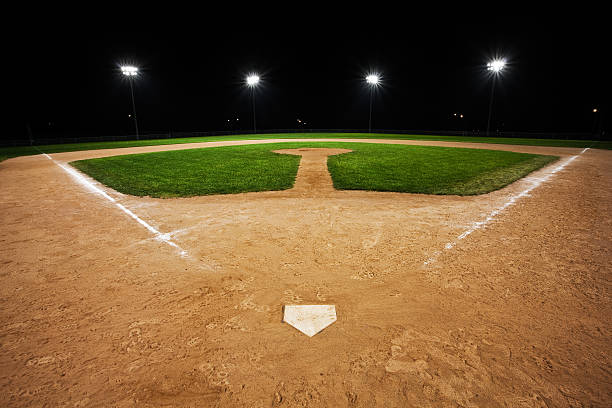
- Environmental Impact
- Reduced Carbon Footprint
Energy Reduction: Lower energy consumption directly correlates with reduced greenhouse gas emissions from power plants, contributing to a smaller carbon footprint.
Sustainability Goals: By adopting LED lighting, stadiums can align with broader sustainability goals and corporate social responsibility (CSR) initiatives, showcasing their commitment to environmental stewardship.
The transition to LED stadium lighting represents a significant advancement in energy efficiency for sports venues. With higher lumens per watt, smart control capabilities, reduced heat generation, and substantial financial savings, LEDs provide a compelling case for modernizing stadium lighting systems. The reduced energy consumption not only benefits the bottom line but also supports environmental sustainability, making LED technology a crucial component of the future of sports venue design.
2. Lower utility costs
One of the primary advantages of adopting LED (Light Emitting Diode) technology for stadium lighting is the significant reduction in utility costs. This reduction is achieved through various factors associated with the high efficiency and advanced features of LED systems. Here’s an in-depth look at how LED stadium lighting leads to lower utility costs:
- Energy Efficiency
- Higher Lumens per Watt
Efficiency: LEDs produce more light (lumens) per unit of power (watt) compared to traditional lighting systems like metal halide or high-pressure sodium lamps.
Impact: This efficiency means that fewer watts are needed to achieve the same level of illumination, directly reducing the amount of electricity consumed and thus lowering utility bills.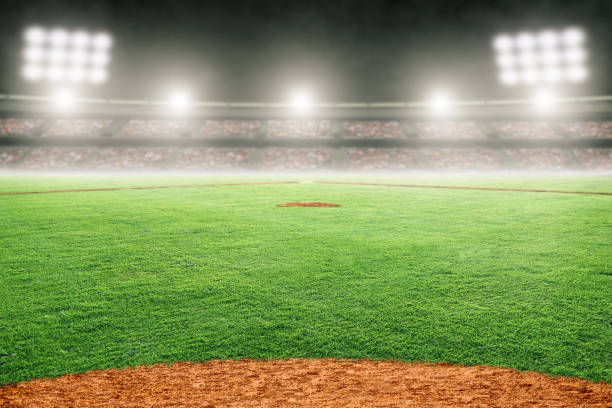
- Reduced Power Consumption
Power Savings: LED systems consume significantly less power than traditional lighting systems. For example, an LED fixture that provides the same illumination as a 1000-watt metal halide lamp may only consume 400-500 watts.
Direct Cost Reduction: Lower power consumption translates into lower electricity bills, providing immediate cost savings.
- Smart and Adaptive Lighting Systems
- Dimming Capabilities
Adjustable Lighting: LEDs can be dimmed to lower light levels without losing efficiency. This allows for adjusting the lighting according to the specific needs of events, practices, or non-event times.
Energy Savings: By dimming lights when full brightness is not needed, significant energy savings can be achieved, further reducing utility costs.
- Automation and Scheduling
Scheduled Operation: LED lighting systems can be programmed to operate on specific schedules, ensuring that lights are only on when necessary. This prevents energy wastage during non-operational hours.
Real-Time Adjustments: Integration with smart systems allows for real-time adjustments based on occupancy, daylight availability, and specific event needs, optimizing energy use and reducing costs.
- Lower Heat Emission
- Reduced Cooling Costs
Heat Generation: LEDs generate much less heat compared to traditional incandescent or HID lamps. This results in lower ambient temperatures within the stadium.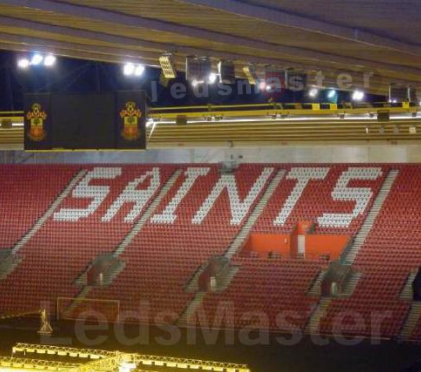
Cooling Load: Reduced heat output decreases the burden on air conditioning and ventilation systems, leading to additional savings on cooling costs.
- Maintenance Savings
- Longer Lifespan
Durability: LEDs have a much longer operational lifespan (often 50,000 hours or more) compared to traditional lighting systems. This reduces the frequency of replacements and maintenance interventions.
Cost Reduction: Fewer replacements and less frequent maintenance translate into lower labor costs and reduced expenditure on replacement bulbs and parts.
- Government Incentives and Rebates
- Energy Efficiency Programs
Incentives: Many governments and utility companies offer financial incentives, rebates, and tax credits for the adoption of energy-efficient technologies like LED lighting.
Offset Initial Costs: These incentives can significantly offset the initial investment costs, making the transition to LED lighting even more financially attractive and further reducing overall utility expenses.
- Case Studies and Real-World Examples
- Success Stories
AT&T Stadium, Texas: By switching to LED lighting, the stadium reported a significant reduction in energy consumption and utility costs. The improved efficiency also enhanced the overall lighting quality for events.
Allianz Arena, Munich: The adoption of LED lighting not only improved the visual experience for spectators but also resulted in considerable energy savings and reduced operational costs.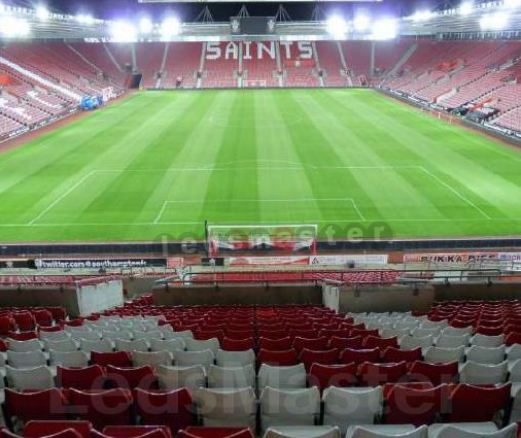
- Long-Term Financial Impact
- Return on Investment (ROI)
Initial Investment: Although the initial cost of LED lighting systems may be higher than traditional systems, the reduced energy consumption and maintenance savings result in a favorable ROI within a few years.
Sustained Savings: Over the lifespan of the LED fixtures, the accumulated savings on utility bills and maintenance costs can be substantial, providing long-term financial benefits.
The transition to LED stadium lighting offers a compelling economic advantage by significantly lowering utility costs. With higher energy efficiency, smart control capabilities, reduced cooling loads, and maintenance savings, LED systems provide an excellent return on investment. Additionally, the availability of government incentives makes the adoption of LED technology even more financially beneficial. As stadiums continue to seek ways to reduce operational costs and improve sustainability, LED lighting stands out as a crucial and impactful solution.
B. Improved Visibility
1. Enhanced player performance
LED (Light Emitting Diode) technology in stadium lighting plays a crucial role in enhancing player performance. Improved visibility, consistency, and lighting quality contribute to better on-field performance and safety for athletes. Here’s a detailed exploration of how LED stadium lighting enhances player performance:
- Superior Visibility
- Enhanced Illumination
Brightness: LEDs provide bright, even illumination across the entire playing surface, eliminating dark spots and shadows that can affect player performance.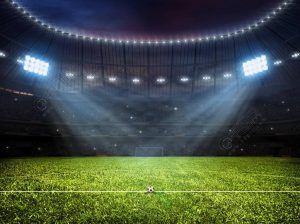
Consistent Lighting: The uniformity of LED lighting ensures that players have a consistent visual experience, reducing eye strain and improving reaction times.
- High Color Rendering Index (CRI)
Natural Color Perception: LEDs offer a high CRI, meaning they render colors more accurately and naturally. This helps players see the ball, uniforms, and field markings more clearly, which is critical for accurate and quick decision-making.
Improved Depth Perception: Better color rendering improves depth perception, allowing players to judge distances more accurately and enhancing overall gameplay.
- Flicker-Free Performance
- Elimination of Flicker
Stable Light Output: LED lights provide a stable, flicker-free illumination. Traditional lighting systems can flicker, especially when dimmed or nearing the end of their lifespan, which can be distracting and affect player concentration.
Impact on High-Speed Movements: Flicker-free lighting is particularly important for fast-paced sports where high-speed movements are common. Players can track the ball and other players more effectively without the distraction of flickering lights.
- Reduced Glare
- Directional Lighting
Focused Beam: LED fixtures can be designed to provide directional lighting, focusing the light where it’s needed and minimizing glare. This ensures that players are not blinded by harsh lights during gameplay.
Anti-Glare Technology: Many LED systems incorporate anti-glare technology to further reduce the chances of light glare affecting player performance.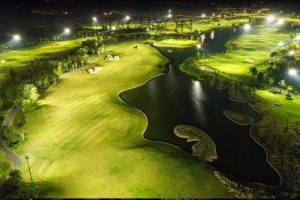
- Enhanced Safety
- Clearer Visibility of Hazards
Identification of Hazards: Improved lighting quality helps players identify potential hazards on the field, such as uneven surfaces, debris, or other obstacles, reducing the risk of injuries.
Better Player Awareness: With enhanced visibility, players can better anticipate the movements of other players, reducing collisions and enhancing overall safety.
- Adaptability to Different Conditions
- Adjustable Color Temperature
Tunable Lighting: LEDs can be tuned to different color temperatures to suit various sports and conditions. For instance, cooler light can be used during daytime events, while warmer light might be preferred for evening games.
Optimized Conditions: This adaptability ensures optimal lighting conditions for different times of the day and weather conditions, providing a consistent and high-quality visual environment for players.
- Dynamic Lighting Control
Real-Time Adjustments: Smart LED systems can adjust lighting levels in real-time based on the needs of the game, such as increasing brightness during critical moments or dimming during breaks.
Customized Lighting Scenarios: Different sports or events may require specific lighting setups. LED systems can be programmed to provide customized lighting scenarios that enhance the experience for players.
- Psychological Benefits
- Improved Focus and Concentration
Reduced Distractions: The high quality and consistency of LED lighting reduce visual distractions, helping players maintain better focus and concentration during the game.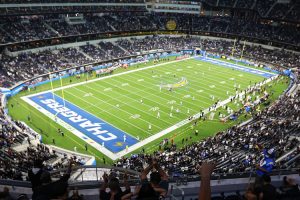
Positive Mental Impact: Good lighting can positively impact mood and mental alertness, contributing to better overall performance.
- Enhanced Spectator Experience
Supportive Environment: When spectators can see the game more clearly, their engagement and enthusiasm increase, creating a more supportive and motivating environment for players.
LED stadium lighting significantly enhances player performance by providing superior visibility, consistent and flicker-free illumination, reduced glare, and improved safety. The adaptability and advanced features of LED systems ensure optimal lighting conditions for various sports and events, contributing to better focus, concentration, and overall gameplay. As stadiums continue to adopt LED technology, the positive impact on player performance becomes increasingly evident, making it a vital component of modern sports venue design.
2. Better spectator experience
LED (Light Emitting Diode) technology significantly enhances the spectator experience at sports venues. Improved visibility, vibrant colors, dynamic lighting effects, and a more immersive atmosphere all contribute to a superior experience for fans. Here’s how LED stadium lighting enhances the spectator experience:
- Enhanced Visibility and Clarity
- Superior Brightness and Uniformity
Consistent Illumination: LEDs provide bright, even illumination across the entire venue, ensuring that every seat in the stadium has a clear view of the action.
No Dark Spots: Uniform lighting eliminates dark spots and shadows, ensuring that spectators can see the entire field or court clearly.
- High Color Rendering Index (CRI)
Vivid Colors: LEDs have a high CRI, meaning they render colors more accurately and vividly. This enhances the visibility of team colors, player uniforms, and field markings, making the game more enjoyable to watch.
Better Depth Perception: Enhanced color accuracy improves depth perception, allowing spectators to better judge distances and follow the action more easily.
- Dynamic Lighting Effects
- Pre-Game and Halftime Shows
Entertainment Value: LED lighting systems can create dynamic light shows for pre-game and halftime entertainment, enhancing the overall spectacle and keeping the audience engaged.
Customizable Scenes: Advanced LED systems can be programmed to create customized lighting scenes that match the theme of the event or highlight special moments.
- Interactive Lighting
Fan Interaction: LEDs can be used to create interactive lighting effects that respond to crowd noise or movements, adding an element of interactivity and making the experience more engaging for fans.
(To Be Continued)

